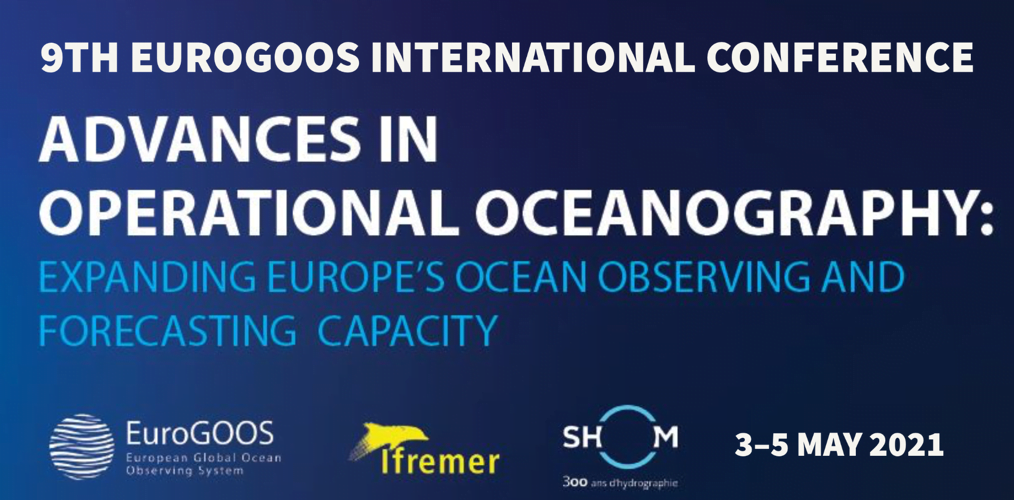The 9th EuroGOOS International Conference took place online from 3-5 May 2021, and saw the participation of hundreds of scientists, technologists and policymakers involved in ocean observation technologies. The full name of the conference was “Advances in Operational Oceanography – Expanding Europe’s Ocean Observing and Forecasting Capacity”, in light of the UN Decade of Ocean Science for Sustainable Development, and as the marine domain is one of its specialised fields, LifeWatch ERIC was delighted to participate in the side event “Cooperation Framework between Marine Research Infrastructures” (RIs).
Eleven marine RIs took part, with each infrastructure giving a short presentation before leaving the floor open to discuss how to bolster RI cooperation moving forward, also with a view to better supporting the roll-out of the European Green Deal. LifeWatch ERIC CEO Christos Arvanitidis presented several ideas and projects designed to foster collaboration between RIs and the research sector more generally, among which the ERIC FORUM, EOSC Future and the LifeWatch ERIC Internal Joint Initiative, along with its technical integration layer provided by the innovative developments of Tesseract and LifeBlock. Critically, he identified the principal challenge facing RIs as cultural: the difficult task of reshaping the overriding scientific praxis from individualistic to collaborative. The desired result would be a dynamic networking synthesis, and here Christos quoted E. O. Wilson of Harvard University: “jumping together of knowledge by the linking of facts and fact-evidenced theory across disciplines to create common ground of explanation“. He finally focused on the essential step that needs to be taken regarding the identification and investments in areas of common RI interest, in other words, joint investments in their “trading zones“, the most promising areas for scientific research and technological innovation.
Participants recognised benefits of enhanced RI cooperation as being strength in numbers – having a louder voice, more opportunities and larger visibility – as well as the all-important reduction in workload overlap and cost. Increased cohesion would also give rise to opportunities such as the possibility to provide joint education and training programmes for scientists. Due to the vast range of services provided and the complexity of wide-scale collaboration, the RIs were quick in identifying data and service compatibility and integration as the main potential issue, noting however that the cutting-edge work being carried out by LifeWatch ERIC – particularly on the Tesseract platform for building Virtual Research Environments – could be key to boosting interoperability and integration.
After a fruitful discussion, the members concluded that the best course of action was increased training and exchange between RIs, in terms of communication, personnel and projects, in order to fill network and knowledge gaps. Christos reiterated that RIs require the support of the research community and the community of practice at large in order to succeed, as well as the importance of promoting cross-domain research and co-developing common platforms. All in all, participants were enthusiastic about the idea of drafting a joint White Paper in order to define key shared objectives and consolidate a common strategy for marine RIs. Stay tuned!
